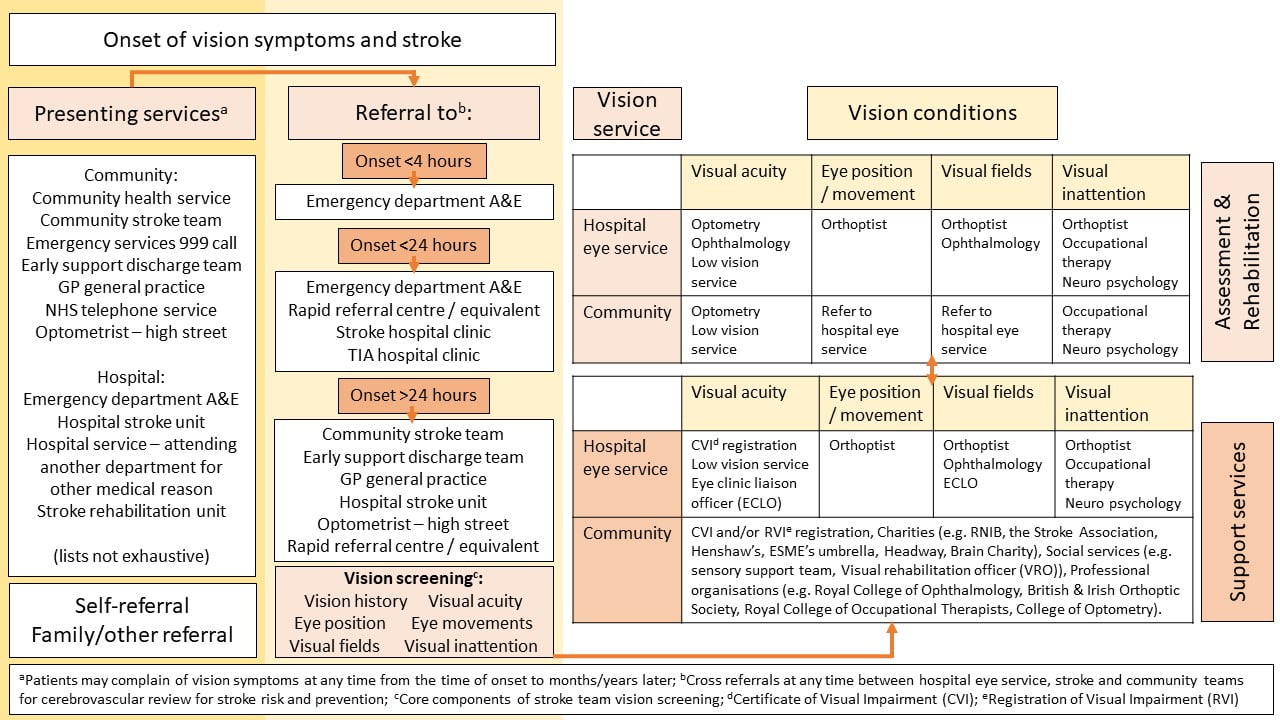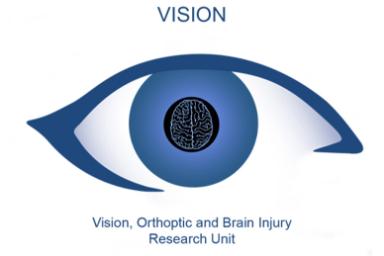Stroke Vision Care Pathway
The stroke-vision care pathway has been developed collaboratively with stroke survivors, clinicians and researchers (including stroke professionals and eye professionals). We encourage anyone working with stroke survivors to implement the use of this care pathway to improve detection of visual impairment and access to eye care.
Download Stroke Vision Care Pathway Guidelines
 Screenshot of Stroke Vision Care Pathway Guidelines
Screenshot of Stroke Vision Care Pathway Guidelines
Guidance Notes
- The purpose of the stroke-vision care pathway is to encourage early identification of visual impairment in stroke survivors with early and appropriate referrals to vision services.
- The stroke-vision care pathway is designed to consider the various services to which stroke survivors might present with their vision symptoms, the timing at which this might occur, the various referral options dependent on the type of visual impairment and the various support services that be appropriate – with the goal of maximising patient benefit.
- The stroke-vision care pathway should be broadly applicable across the UK despite variations that can occur with local service arrangements, policies and procedures.
- The stroke-vision care pathway is best implemented alongside appropriate vision screening provision to aid the accurate identification of visual impairment with assessments consisting of a minimum number (core) outcome measures.
VISION Research Unit, University of Liverpool retain all copyright on professional resources, patient resources, BIVI-IQ questionnaire, VISA screening tool and V-FAST screening tool. If you wish to modify/translate these resources/tools in any way, please contact rowef@liverpool.ac.uk.
